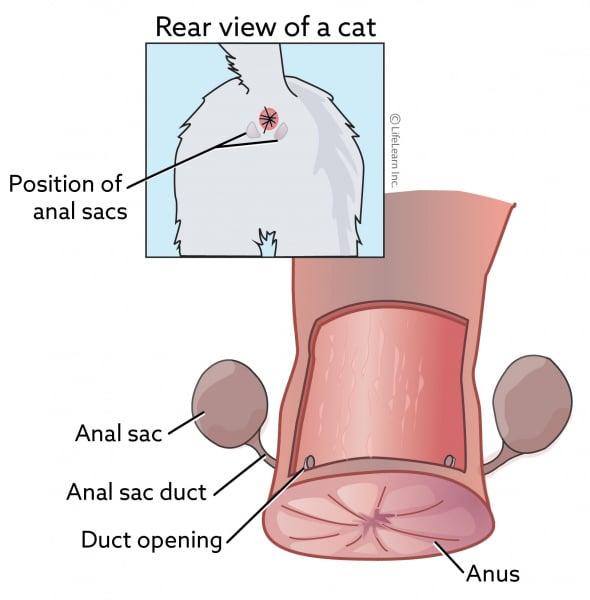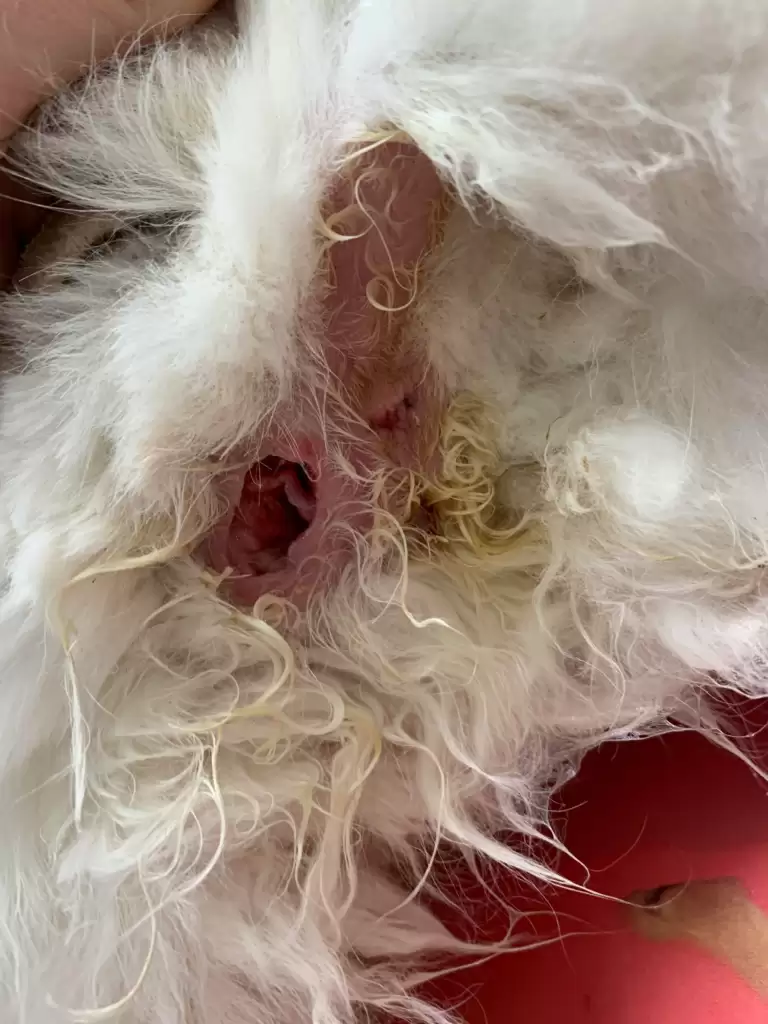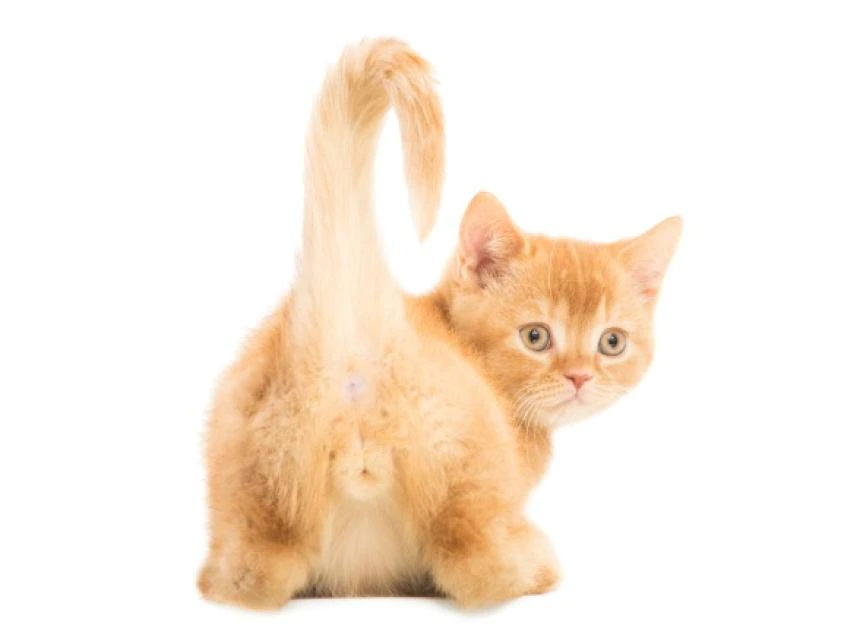Anal Gland Disorders in Cats
Just inside a cat’s anus are two small glands: the anal glands (sometimes referred to as anal sacs). If you imagine your cat’s anus as the face of a clock (that might be the strangest beginning to any sentence I’ve ever written), the anal glands are located at the 4 and the 8 position.

These glands produce a foul-smelling secretion. Originally, these glands allowed cats to mark their territory and ward off predators, but they no longer serve much purpose, now that cats have become domesticated. Small amounts of anal gland secretion are released when a cat defecates, however, cats may express the entire contents of these glands when cats get excited or scared. As a cat veterinarian, I can’t begin to count how many times I’ve been “glanded” in the exam room by a frightened or nervous cat. The room suddenly fills up with a distinctly unpleasant musky, fishy odor. If it gets on my shirt or my lab coat, I have to change clothing immediately or that smell will cling to me all day.
Diseases of the anal glands are more common in dogs, but they do occur in cats as well. Common anal gland disorders include impaction, abscesses, and tumors.
Impaction occurs when the duct leading from the gland to the anus becomes clogged and the gland becomes distended as it fills with the secretion. As the gland distends, the pressure inside increases, causing discomfort to the cat. Cats sometimes demonstrate this discomfort by “scooting” – dragging their anus on the floor or carpet, although this behavior is more commonly seen in dogs, rather than cats. The more common behavior in cats with anal gland irritation is excessive licking, cleaning, and generally fussing with the anal area.

Occasionally, cats will show reluctance to sit or to poop, and may hold their tail in an unusual position. Anal gland impaction can be treated by having your veterinarian express the anal glands manually. This relieves the pressure within the gland and reopens the clogged duct, which usually resolves the problem. Having expressed thousands of anal glands over my career, I’ve learned how to do it quickly and relatively painlessly, but all cats still hate having it done.
Sometimes, the entrapped anal gland secretion will become infected. This isn’t surprising, given the close proximity of the glands to the anus. Pus will begin to accumulate within the gland, forming an abscess. If the pus inside the gland cannot escape via the normal route (the duct leading from the gland to just inside the anus), the pus will try to burrow through the skin around the anus.

In some instances, the pus ruptures through the skin and drains out on its own, which may be the first sign that an owner notices. Anal gland rupture often results in skin damage in that area, requiring anesthesia, a thorough cleansing, and surgical trimming and/or removal of the damaged skin. A few stitches may be required to reduce the size of the wound and promote quicker healing.

If the abscess is diagnosed before the gland ruptures, it will need to be lanced by your veterinarian while the cat is sedated or under anesthesia. After the abscess is lanced, antibiotics are prescribed for a few days. Warm compresses to the area help speed up the healing, however, this may be tricky, as most cats aren’t too keen about having a warm cloth applied to their bottom.
Cancer of the anal glands (referred to as anal gland adenocarcinoma) is, thankfully, an uncommon condition in cats. The symptoms often mimic those of an anal gland abscess, including swelling, inflammation, pain, bleeding, and ulceration of the skin surrounding the anus. The preferred treatment option for anal gland adenocarcinoma in cats is surgical removal of the cancerous anal gland, however, these tend to be aggressive tumors, and the cancer has often spread to other parts of the body by the time a diagnosis has been made, necessitating a poor prognosis. I feel fortunate to have never diagnosed a case in my practice.
Cats with recurrent anal gland problems might benefit from a high fiber diet, as the fiber results in a bulkier stool, which puts more pressure on the anal glands during defecation, allowing the glands to be expressed more efficiently. Overweight cats are at increased risk for anal gland disorders, so maintaining a healthy body weight can help reduce the incidence of these types of problems. Cats who suffer repeated impactions or abscesses may require surgical removal of the anal glands. In my experience, this is rarely necessary.

